

Complete version of Asset Cloud only.
A Multi-Quantity Asset is an asset that is not unique across sites and locations and may have quantity associated with it. To create a Multi-Quantity Asset, you will create the Asset Type and the Asset simultaneously, then add quantity to it. Folding chairs or textbooks are examples of multi-quantity assets. You can create the asset type "Folding Chair" and add quantity to it at different locations.
Unlike fixed assets, purchase details are not added when creating a new multi-quantity asset. You can include purchase details (such as cost and vendor) when you add quantity to your asset. This allows you to have varying purchase information for different quantities. For instance, you may purchase 100 folding chairs from vendor A for $200, then later purchase 100 more folding chairs from Vendor B for $150. Entering the purchase information when you add the quantity allows you to keep track of the differing purchase dates, costs, etc.
Note for Mobile Device Users: Assets can be added on an iOS and Android mobile device.
Access the New Multi-Quantity Asset Screen
Select Assets > New Multi-Quantity Asset.
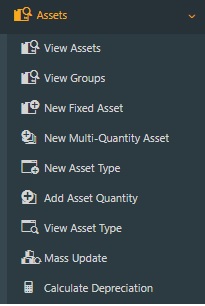
The New Multi-Quantity Asset screen will appear.
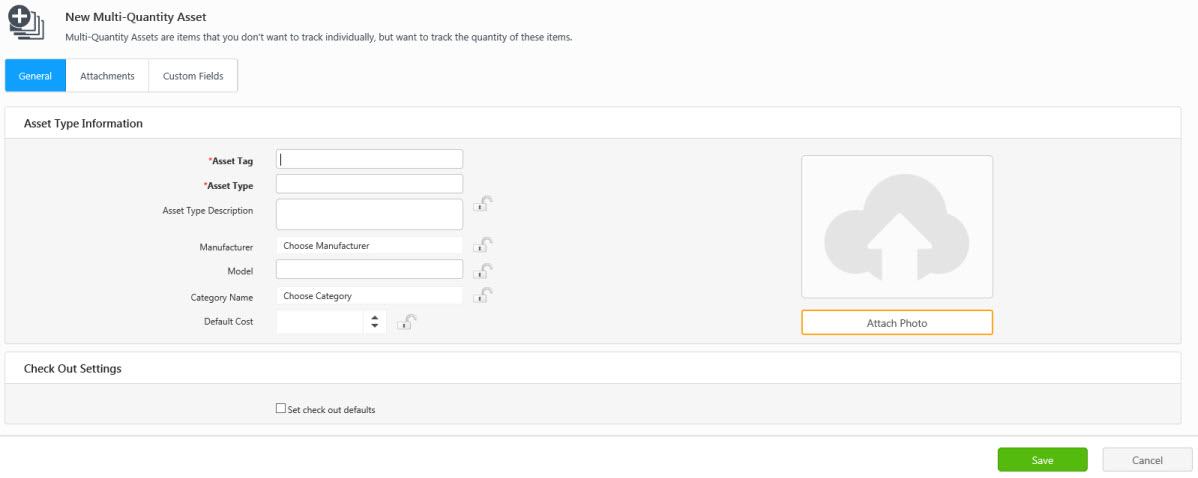
Note - When you create a multi-quantity asset on the New Multi-quantity Asset screen, you have the option to specify its asset type directly. It's important to note that each multi-quantity asset can only be associated with a single asset type. Therefore, it is not possible to categorize multiple multi-quantity assets under a single asset type. If you attempt to associate a multi-quantity asset with an existing asset type, the system will generate an error indicating that the asset type already exists in the system.
Note regarding Categories - It is a best practice suggestion to create and utilize Categories to aid in tracking your assets. If you have several asset types of different laptops (different manufacturers or model numbers, for example), you can add them to a Category labeled Laptop. This lets you filter or run a report by category for all laptops. Another example is textbooks. If you have several editions of a science textbook, you can create a Science Category and create several Quantity Asset Types under that category.
Note regarding Default Cost - A default cost can be added here. This cost can be a negative value.
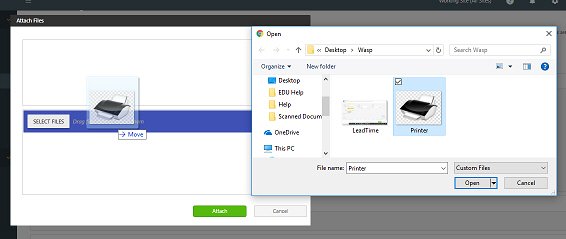
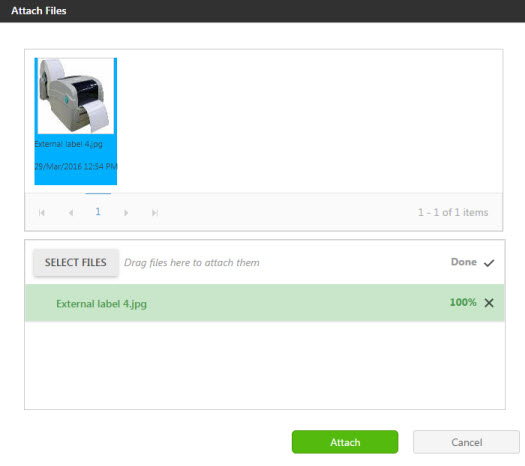

Click on the Attachments tab to add an attachment (an image or a document) to this asset. Note that the picture attached in the General tab will also appear here.

To add an attachment:
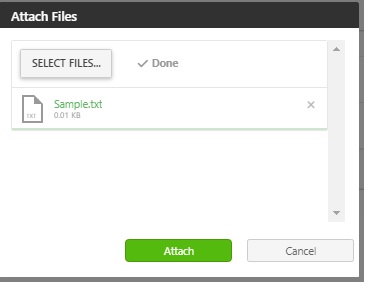


If the custom field is configured for the asset type, then the custom field tab will appear. Enter the required details and save.
When you are done adding information for this Multi-Quantity Asset, click on the Save button. You are now ready to Add Quantity to this asset.
FAQs - Refer to Knowledgebase - Knowledgebase > Cloud > AssetCloud for FAQs. Example:
Note: Use of the resources described here requires internet access.